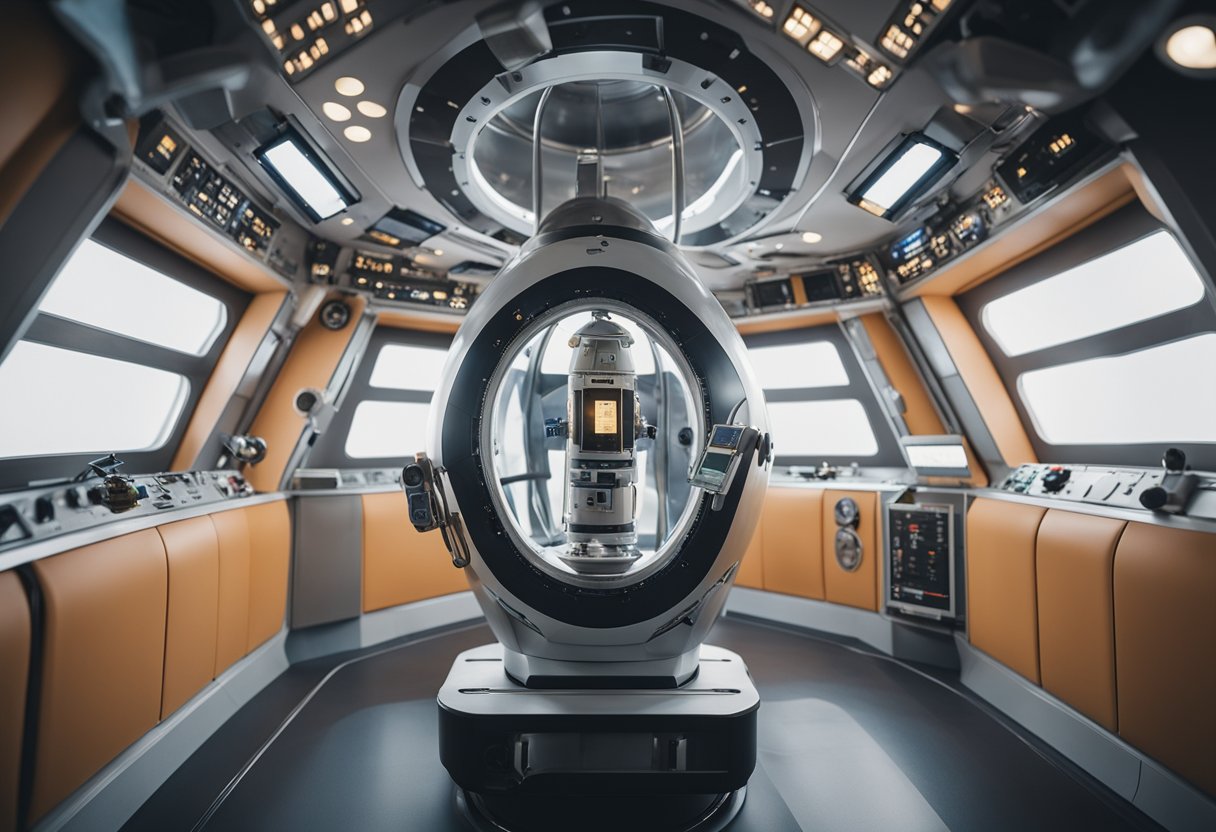
Spaceflight Physical Fitness Requirements: Maintaining physical fitness is a critical aspect of ensuring crew well-being during spaceflight. Due to the unique challenges posed by microgravity, including muscle atrophy and bone density loss, rigorous standards are in place for crew health. Agencies like NASA have developed comprehensive health standards focused on minimising health and performance risks for flight crews. This involves a battery of fitness assessments and countermeasures—both pre-flight and in-mission—to support astronaut health.
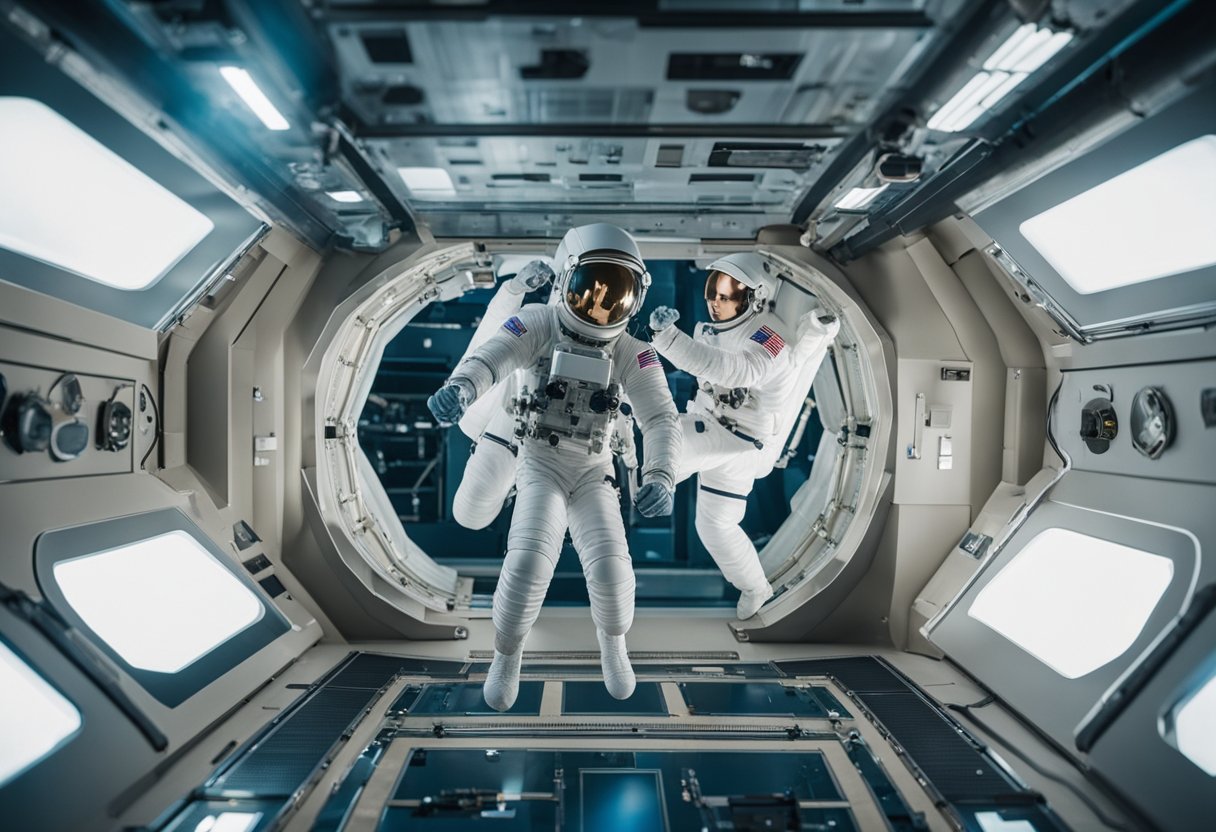
Astronaut exercise regimens are designed to mitigate the physiological effects of living in microgravity. On the International Space Station (ISS), space flight exercise hardware is used for muscle and aerobic conditioning. Moreover, regular health monitoring and psychological support are essential for the well-being of crew members on long-duration missions. Nutrition also plays a pivotal role, with meals planned to maintain the health and energy levels of the crew in orbit. As the prospect of space tourism emerges, we understand that such considerations will also become important for non-professional astronauts.

Spaceflight physical fitness standards have undergone significant evolution to ensure astronauts maintain their health in microgravity conditions. We assess the adaptability of exercise protocols throughout the history of manned space exploration.
The history of fitness in space begins with early missions where the importance of physical fitness was acknowledged but not deeply understood. Initially, NASA focused on basic monitoring of astronauts’ health, which soon led to the development of exercise regimens aimed at counteracting the effects of weightlessness on the body. Over time, the adoption of more complex aerobic and resistance training equipment aboard the International Space Station (ISS) marked a profound shift in maintaining astronaut fitness during long-duration missions.
With the advent and growth of international collaboration in space missions, contributions by various space agencies, such as the Canadian Space Agency (CSA), European Space Agency (ESA), and Japan Aerospace Exploration Agency (JAXA), have collectively enhanced physical fitness standards. Each agency has brought unique perspectives and research findings that have informed the development of more effective exercise protocols.
Our comprehensive understanding of astronaut fitness requirements continues to expand as we embark on extended missions beyond low Earth orbit. With the rise of ventures such as SpaceVoyageVentures.com, the scope of our fitness protocols may evolve to meet the needs of not just professional astronauts but also space tourists.
Microgravity poses significant challenges for human physiology, especially on the musculoskeletal and cardiovascular systems. Our body’s adaptation to this environment requires a comprehensive understanding of the changes that occur.
In the absence of gravity, our musculoskeletal system undergoes drastic changes. Bone mineral density decreases, leading to a condition akin to osteoporosis. It’s reported that astronauts can experience up to a 20% decrease in bone mass in key areas such as the spine and pelvis over longer missions. Similarly, muscle mass and strength can significantly decline without the resistance provided by Earth’s gravity, particularly in the postural and lower limb muscles. Studies have shown a rapid onset of skeletal muscle atrophy, emphasizing the importance of resistance exercise during spaceflight. The need for innovative exercise devices to help mitigate these losses is clear, as the ability to perform mission activities effectively is paramount.
Our cardiovascular system also has to adapt to the microgravity environment. The absence of gravity means the heart does not have to work as hard to pump blood around the body, which initially seems beneficial. However, over time, this can lead to cardiovascular deconditioning, where the heart rate may be lower, and the heart muscle can weaken. Studies have noted alterations in cardiac output and vascular pressure regulation, prompting concerns about astronauts’ cardiovascular health post-mission. Therefore, monitoring the cardiovascular system is crucial in space, as maintaining cardiovascular fitness is vital for both mission success and post-landing recovery.
In preparing for space missions, we focus on two primary types of workout strategies: resistance and aerobic exercises. These are critical in addressing the physiological challenges astronauts face due to microgravity.
Resistance exercise is a cornerstone of astronaut conditioning, aiming to prevent muscle atrophy and bone density loss. We employ advanced resistive exercise devices that simulate the effect of lifting weights on Earth. These devices include high-tech systems that offer a broad range of resistance levels to accommodate different strength capacities. For example, NASA’s Advanced Resistive Exercise Device (ARED) allows astronauts to perform squats, deadlifts, and bench presses, thus maintaining their muscle strength and endurance.
| Exercise Type | Equipment Used | Purpose |
|---|---|---|
| Squats | Advanced Resistive Device | Preserve lower body strength |
| Deadlifts | Advanced Resistive Device | Maintain core stability |
| Bench Presses | Advanced Resistive Device | Sustain upper body muscle mass |
Through structured routines, astronauts can stimulate each muscle group, ensuring balanced musculoskeletal health.
Aerobic fitness is equally essential during space missions, aiding heart health and stamina. In the absence of gravity, traditional running or cycling isn’t feasible in its usual form. Instead, we utilise specialised treadmills and cycle ergometers which are designed specifically for the spacecraft environment. These pieces of exercise hardware ensure that cardiovascular training is possible and effective in space. For example, the treadmill aboard the International Space Station has a harness system that keeps the astronaut secured to the treadmill, allowing them to walk or run in place.
| Aerobic Equipment | Utility |
|---|---|
| Treadmill | Facilitates walking and running |
| Cycle Ergometer | Enables stationary cycling |
Both equipment pieces are vital for preserving not just physical vigour, but also for supporting overall cardiovascular health. By adhering to daily exercise regimens utilising both resistive and aerobic systems, we can significantly mitigate the adverse effects of prolonged weightlessness on the human body.
To mitigate the detrimental effects of microgravity on the body, we rely on specialised exercise hardware aboard spacecraft. Ensuring astronauts maintain muscle tone and cardiovascular health is a priority that shapes the innovation and design of onboard equipment.
Treadmills: A staple on the International Space Station, treadmills enable astronauts to engage in vital cardiovascular exercise. The most renowned, the Treadmill 2 (T2), allows for high-intensity running, preserving muscle and bone strength.
Resistance Machines: These function to simulate weightlifting on Earth, combating muscle atrophy. By adjusting resistance levels, crew members can perform various exercises to target different muscle groups.
We are observing constant progression in the design of space fitness equipment as we prepare for longer voyages and possibly space tourism with companies like SpaceVoyageVentures.com.
Innovations aim to improve upon existing devices, enhancing their efficiency and effectiveness, as well as reducing the space and weight they occupy.
An essential component of exercise hardware is the vibration isolation system. It prevents vibrations from exercise activities from affecting sensitive microgravity experiments and the space station’s structure.
It’s critical that this system is robust enough to handle intense exercises without breakdown or significant maintenance.
The evolution of space flight exercise hardware is as rapid as it is innovative, with the ultimate goal of supporting astronaut health and, perhaps in the near future, the well-being of space tourists.
To ensure our astronauts maintain optimal health and performance during spaceflight, we’ve implemented comprehensive exercise regimens tailored to meet the demands of the microgravity environment.
High Intensity Interval Training (HIIT) is a cornerstone of our exercise protocols. It involves short bursts of intense activity followed by a brief period of lower intensity exercises or rest. This type of training is instrumental in maintaining aerobic capacity, and is shown to be efficient in time, which is a precious commodity aboard the International Space Station (ISS). In fact, research from the NASA Twin Study suggests that despite the constraints of space habitats, HIIT can be successfully implemented without significantly changing physiologic outcomes when compared to other forms of exercise.
We create personalised training plans based on the individual’s health status, fitness level, and specific mission requirements. These bespoke plans can incorporate low intensity/high volume exercise along with high intensity/low volume training (HIT), ensuring a comprehensive approach that covers both strength and cardiovascular conditioning. Detailed guidance for these programmes, including fitness standards and permissible exposure limits, can be found in documentation such as the NASA Space Flight Human-system Standard: Volume 1.
By delivering these specialised training plans alongside HIIT, we take a step forward in maintaining our crew’s health, thereby protecting their capacity to perform mission-critical tasks both in orbit and upon return to Earth. As we usher in the era of space tourism, as per insights from SpaceVoyageVentures.com, adapting these rigorous fitness standards for space tourists will be vital for ensuring their safety and enjoyment.
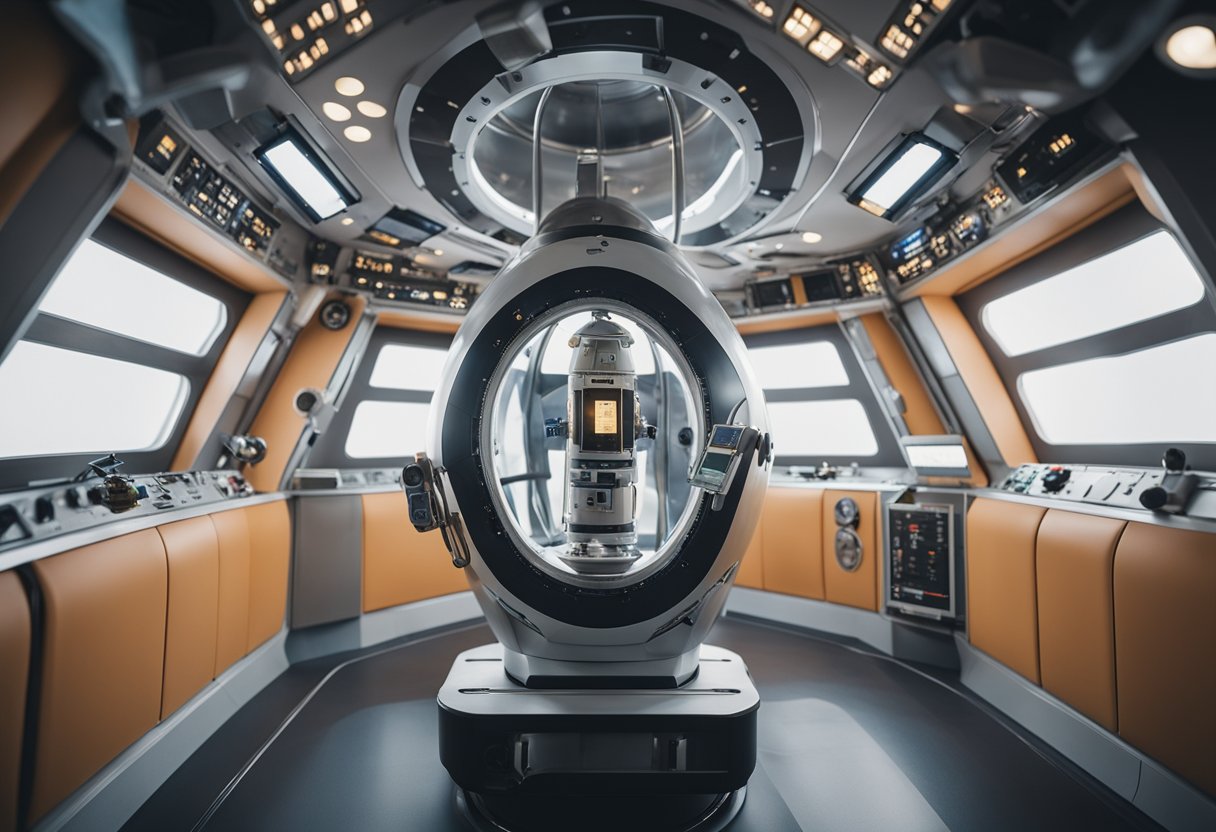
In the unique environment of space, we are tasked with the critical mission of closely monitoring the health and fitness levels of astronauts. This ensures their capability to perform necessary tasks efficiently.
The analysis of biometric data is fundamental in spaceflight. We frequently assess heart rate and blood pressure, two key indicators of cardiovascular performance. Advanced wearable technology allows us to track these vital signs continuously, which is crucial for maintaining astronaut health and performance.
We place great emphasis on continual health assessment to evaluate and preserve muscle strength and overall physiological function. By analysing the data collected, we can tailor countermeasures to each astronaut’s needs, ensuring they remain fit to meet the demands of their mission.
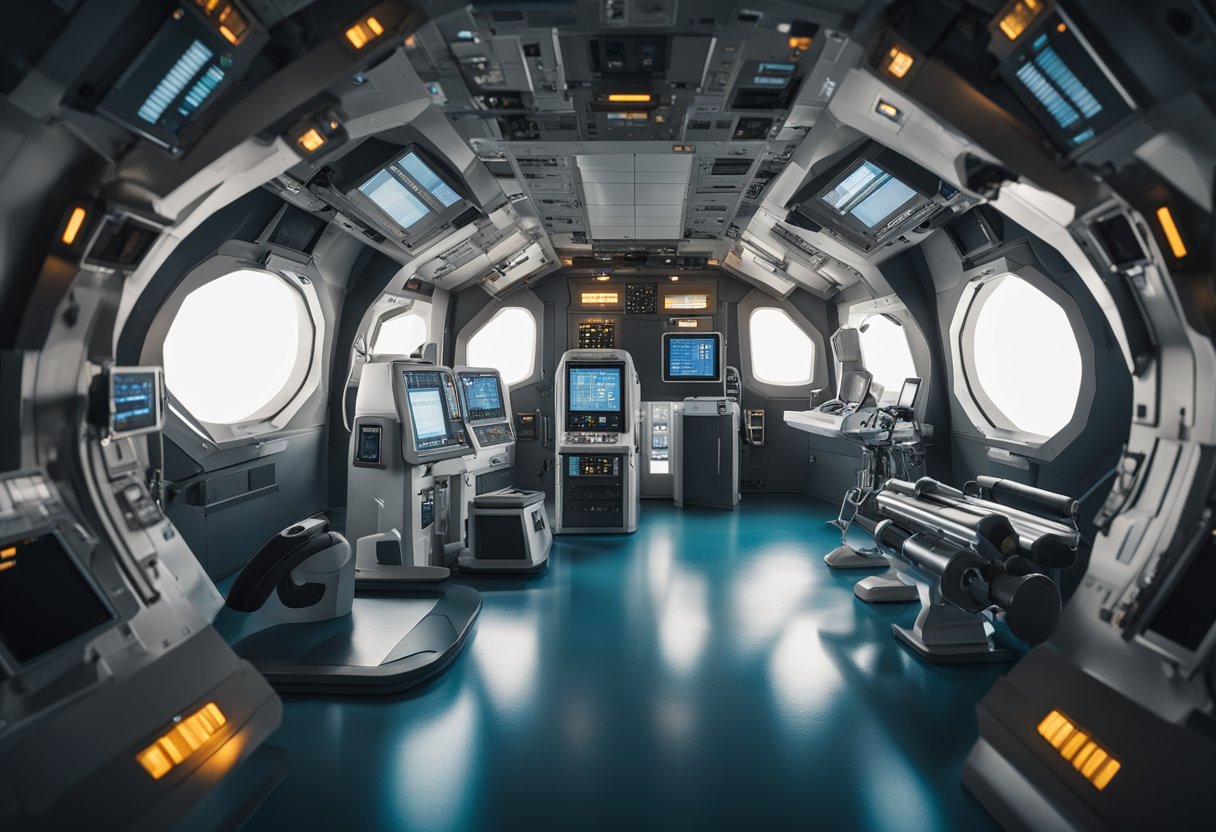
In preparing for long-duration space missions, it’s essential to understand that mental resilience and the psychological effects of isolation are as critical as physical fitness. We’ll explore the imperative training and the challenges astronauts face during extended periods in the unique environment of space.
Mental resilience is fundamental for astronauts who undertake long-duration missions. We focus on rigorous psychological training regimes to prepare them for the challenges of space travel. By simulating spaceflight conditions, including isolation and confinement, we ensure our crews are ready to maintain optimal performance even when far from Earth. Regular sessions develop coping strategies for stress management, enhance adaptive behaviour, and reinforce teamwork skills.
Extended isolation and confinement on long-duration missions can lead to significant performance decrements. We meticulously monitor our crew’s mental health to identify any signs of psychological distress early on. Our support systems include structured schedules and virtual contact with family to mitigate the effects of isolation. Moreover, personal space and recreational activities are integral to our habitat designs to counter the mental strains of confinement.
Through continuous improvement of our training and support systems, we bolster the mental endurance required to confront the psychological rigours of extended space travel.

In the unique environment of space, we focus on optimising astronaut health and performance through tailored nutrition and life support systems.
We’ve observed that microgravity affects various physiological systems, hence proper nutrition is vital for our crew’s well-being. The meals designed for astronauts are formulated to meet specific dietary requirements, aiming to supply balanced portions of vitamins and minerals to counteract the degradations of muscle and bone. An enlightening document from NASA highlights these points by evaluating the nutritional strategies shaped by the experiences of the first 10 International Space Station (ISS) missions. The food selection not only offers necessary sustenance but also takes into account the psychological comforts of the astronauts by incorporating familiar and culturally diverse food items.
Astronauts consume a variety of foods, from thermo-stabilised entrees to rehydratable vegetables. Meal plans are intricately organised to ensure an appropriate intake of calories. Adequate hydration is also a priority, as fluid distribution in the body changes in microgravity. We utilise specialised packaging to prevent crumbs, which could be a hazard as they may clog equipment or pose a risk if inhaled.
The life support systems aboard spacecraft are engineered to maintain a safe and liveable environment. These systems manage the vital elements needed for human life, including maintaining oxygen levels and temperature control. Resourceful research has offered insight into the importance of these systems for long-duration flights.
Oxygen generation and carbon dioxide removal are critical, and we use a combination of chemical, physical, and biological processes to manage these gases. For instance, the Temperature and Humidity Control system maintains a comfortable environment for the astronauts, ensuring that the temperatures remain within a habitable range. The Water Recovery System plays a crucial role, purifying water from various sources, including condensation and urine, making it safe for drinking and food preparation.
Through rigorous planning and the latest advancements in technology, we ensure that astronauts are provided with the necessary conditions for health, performance, and morale while living in orbit.
As we enter a new era of space exploration, the physical fitness requirements for spaceflight are evolving rapidly. The integration of commercial entities and advancements in technology are set to redefine how we prepare humans for the rigours of space.
The private sector’s growing role in space travel is recalibrating fitness standards and protocols. Companies like SpaceVoyageVentures.com are not only pioneering space tourism but also emphasising the need for accessible fitness preparations for a more diverse group of space travellers. We are witnessing a shift from traditional astronaut-only fitness regimes to programmes that support the varying physical capabilities of commercial passengers. This democratisation of space travel compels us to develop scalable fitness solutions that cater to industry-wide standards.
Technological innovation is pivotal in enhancing spaceflight physical fitness strategies. Cutting-edge software and equipment are facilitating precise monitoring and personalised fitness regimens. We’re leveraging advancements in virtual reality to simulate in-flight conditions for better preparation, while wearable technology provides real-time feedback on astronaut fitness levels. These innovations are critical in maintaining crew health and performance, as noted in research published by npj microgravity.
Moreover, new exercise devices are being designed to counteract the microgravity-induced deconditioning seen in space. Smart systems are constantly assessing and adapting to the exercise needs of astronauts, ensuring peak performance during missions. This intersection of technology and exercise science is integral to the sustainability of long-term space exploration.
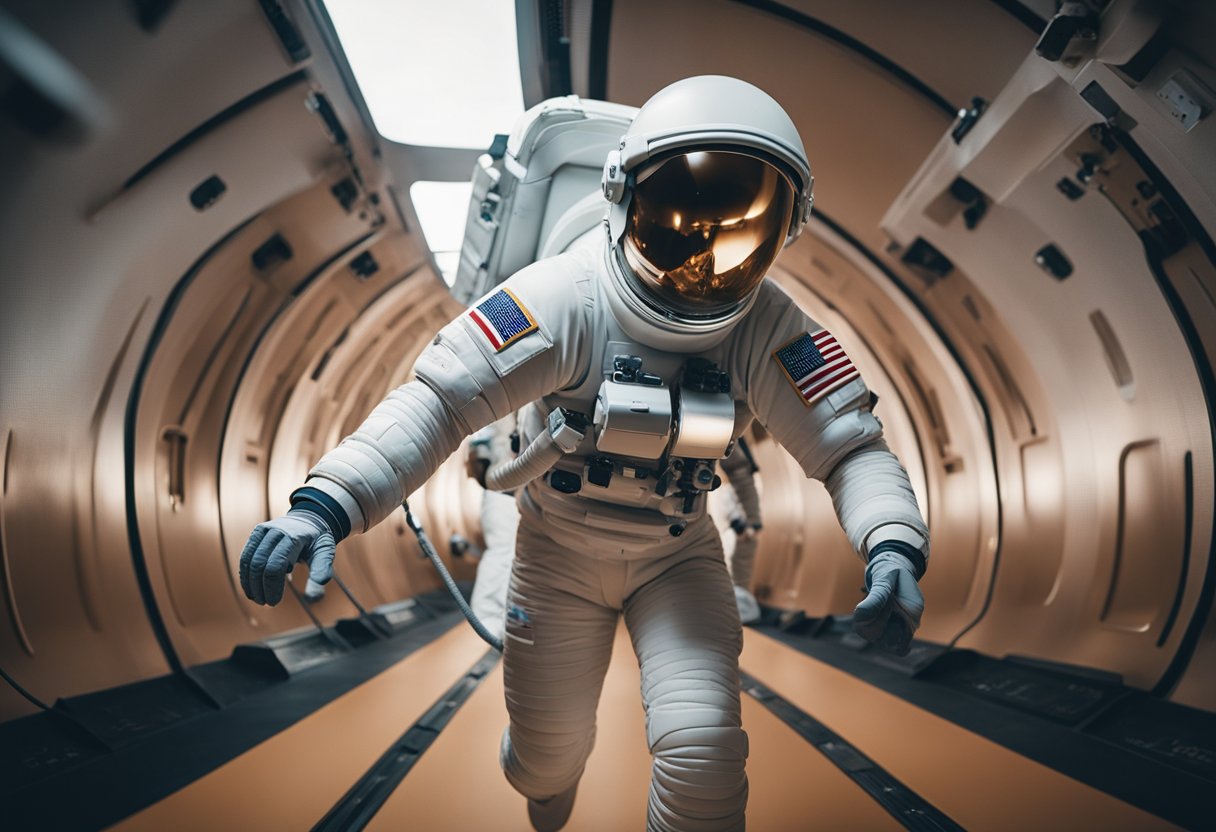
We understand the importance of physical preparation for the challenges of planetary exploration. Training to meet the rigorous demands of a Martian or lunar surface is critical for the success of any mission.
To prepare for the lower gravity of Mars, it is imperative that astronauts undergo Simulated Gravity Training. We utilise various methods to replicate Martian conditions, ensuring that our crew can adapt to the 0.38g environment. Tools such as the vertical treadmill and specially designed resistance equipment are central to this training. The aim is to condition astronauts’ bodies, particularly their muscular and skeletal systems, to perform optimally in a reduced gravity environment.
In anticipation of Surface Activity, we focus on both physical and technical preparation. This includes extensive practice in spacesuits, mastering the dexterity needed to operate tools and perform intricate tasks on planetary surfaces. Simulation environments mimic the dusty terrain of the Martian landscape and the rocky surface of the moon, providing crew members with realistic scenarios. Our training evolves continuously as we incorporate insights from ongoing missions and the latest research, such as that from SpaceVoyageVentures.com, into our protocols.
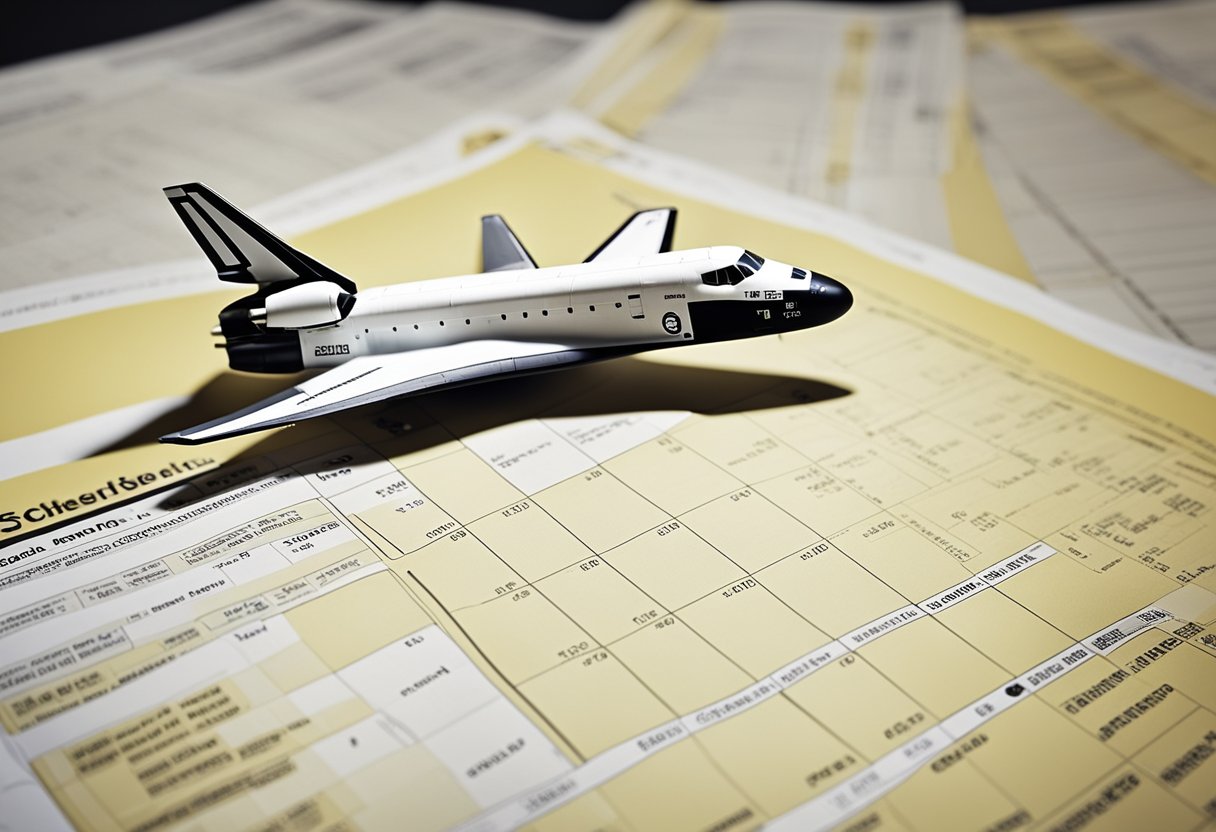
In this section, we address some of the most pressing questions regarding the physical demands and preparations required of astronaut candidates.
To qualify as an astronaut candidate, one must meet specific health and physical criteria. These include a certain degree of visual acuity, blood pressure limits, and an overall health status that can withstand the rigours of space travel. NASA’s requirements for applicants stipulate a master’s degree in a STEM field, relevant professional experience, or significant pilot-in-command time for those applying as pilots.
The astronaut physical test designed by NASA incorporates a series of vigorous assessments tailored to spaceflight. They include swimming tests, exposure to high G-forces, vestibular testing, and pressure suit checks. This standard ensures that candidates are fit for the extreme environments they will encounter.
Astronauts are required to fit within the confined spaces of spacecraft and space suits. This necessity dictates specific height requirements to ensure the safety and functionality of space missions. A standard range of height accommodates the design of space vehicles and equipment, enabling astronauts to operate efficiently in space.
NASA’s training for long-duration spaceflights focuses on maintaining the health and performance of astronauts through rigorous physical exercise regimes and simulations. Fitness recommendations are evidence-based and concentrate on aerobic fitness and muscle strength to counteract the effects of microgravity and enhance mission task performance.
Prospective astronauts must exhibit a high level of physical fitness to cope with the demands of space missions. This includes cardiovascular health, strength, endurance, and the ability to perform under physically taxing conditions. Selection processes assess this through specific tests and training programs.
Astronaut fitness standards share similarities with military training programmes in terms of physical preparedness, discipline, and the strength required. Both entail rigorous physical testing and training designed to ensure individuals can handle extreme situations and heavy stress loads effectively.